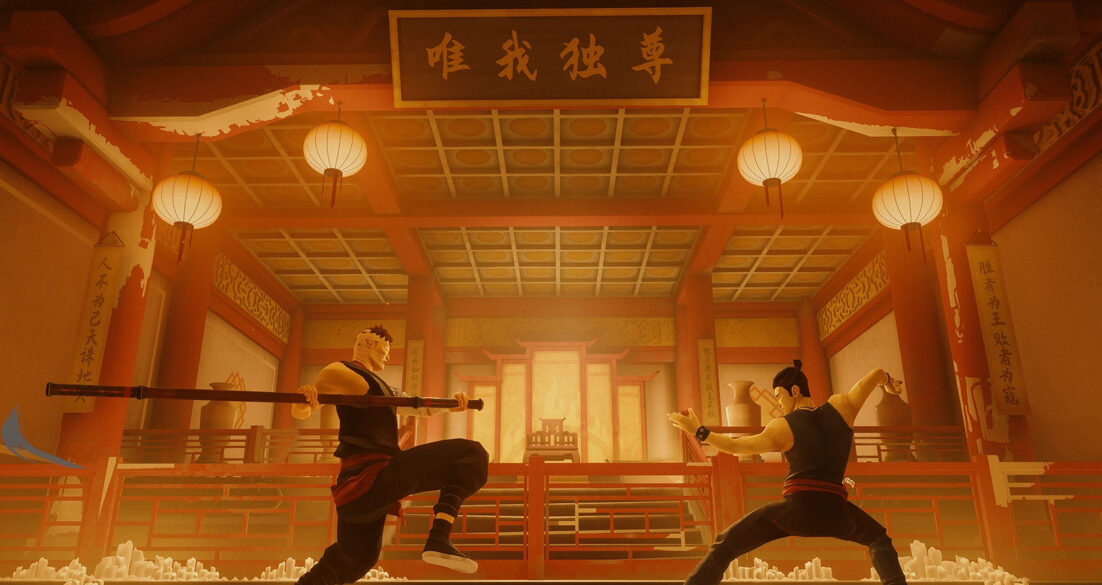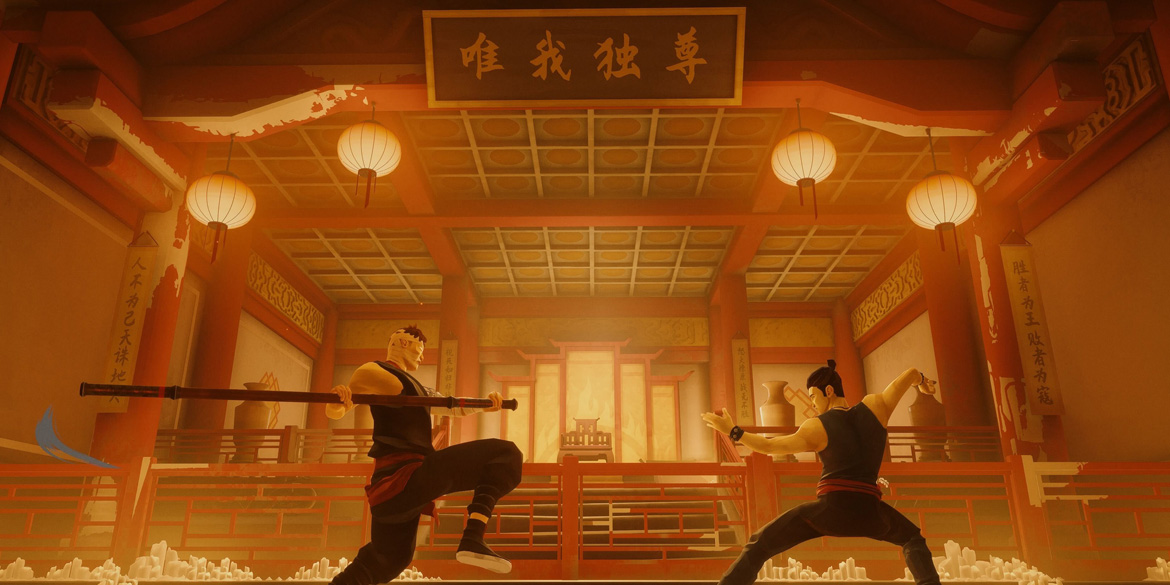The opening hours to Sloclap’s newest foray into the world of martial arts can be punishing, unforgiving, and panic inducing. ‘Sifu’ demands that you learn its systems and how to properly implement them into your strategy before you can progress through its challenges. However, powering through the games at times steep learning curve, you will be rewarded with one of the best hand-to-hand combat systems to ever grace video games. ‘Sifu’ is wrapped in a stylized world full of mystery, intrigue, and a classic tale of revenge. Although its release comes during a busy time for the games industry, ‘Sifu’ makes a powerful push for Game of the Year.
The newest title from Sloclap seeks another take on the Kung Fu action seen in their original title, ‘Absolver’. While their first title focused on multiplayer, their newest abandons that philosophy for a strictly single player experience. In the opening minutes of the story you’re thrown into the control of Yang, the stories main villain. Taking your revenge on a school who wronged you in the past, you leave a wake of death and destruction in your path. This opening sequence serves as your introduction to the games mechanics, but sees you causing the pain that will eventually set you on a path for revenge; with an incredible way to weave the narrative into the opening minutes, as you follow the cycle of violence that often plagues revenge stories. The effective intro eventually leads to a show down between Yang and the Sifu of the school you’re trying to destroy. Only a child during the opening minutes, the main character watches as his father is killed at the hands of Yang. Following the option to play either a male or female character, the child emerges only to be struck down by one of Yang’s followers. However ,death is not the end to this child’s story, a system you will become all too familiar with.
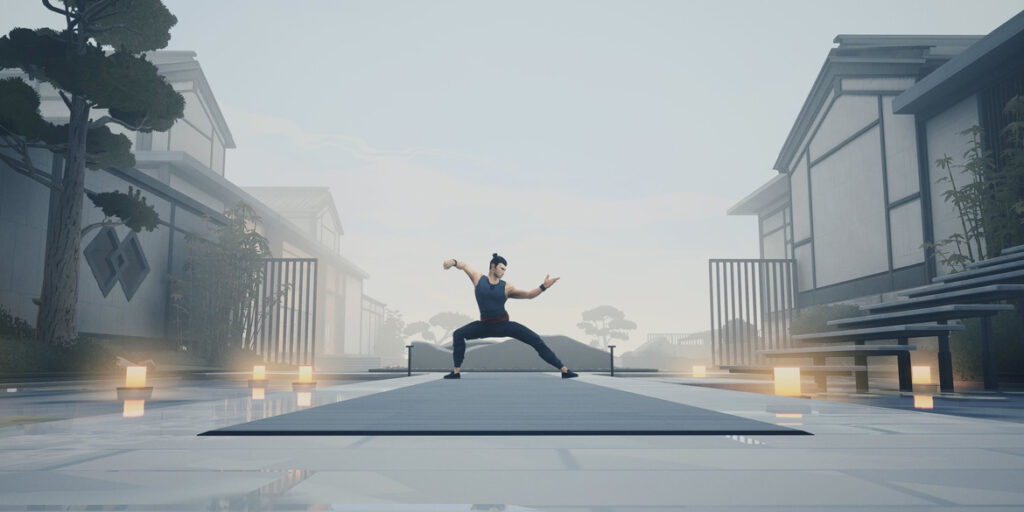
The incredible intro leads into a stylized tutorial as you learn several more mechanics, as well as the names of the five people who betrayed your father. The rogue-lite set up of ‘Sifu’ is simple; you have five separate locations and bosses to tackle. Where the game separates itself from the rest is the way it handles your deaths. The main character has a set of coins that allows for him to revive following a death, however, there is a catch. After each death, an in-game death counter raises by one, your character then ages based on the number of your current death counter. Each decade of aging sees one coin destroyed, as well as an increase in damage, but a decrease in overall health. Once the final coin breaks at age seventy, a death will result in a game over. Checkpoints come in the way of completing a levels final obstacle, one of the five aforementioned bosses. You may then start the next level at any time from the youngest age you were when you reached it. It’s a simple, yet addicting formula of “beat the title before you die of old age”, which becomes the forefront of your battle throughout the many challenges.
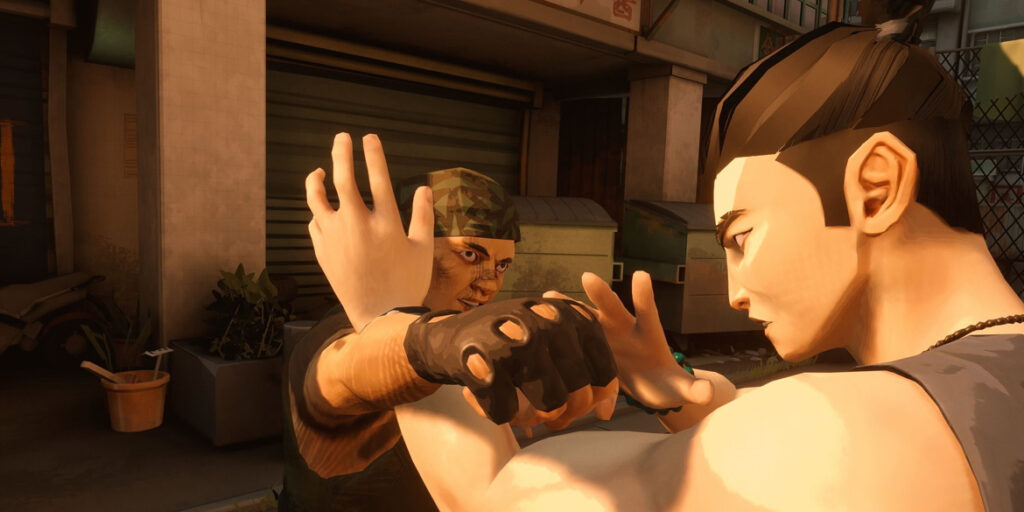
This basic setup ensures that you will be repeatedly playing through the same levels time and time again trying to get to the next level just a little bit younger or with some more of the skills you progressively learn. Upgrades in ‘Sifu’ come with main variations, experience point based upgrades, and shrine upgrades found scattered through each level. Shrines allow you to choose a single upgrade that will be tied to the rest of your run. Using experience points allows you to temporarily unlock various new techniques for the current run. Purchasing these upgrades six times, however, will permanently unlock the skills for use on subsequent runs; this adds an addicting formula that really lends itself to the “one more run” mentality allowing you to finish a permanent upgrade, or complete the level at a younger age.
Unlike most games in the genre, the five levels are not procedurally generated. Each time you start, you’re in for the same experience with only small variations allowed by different shrine upgrades. This may sound like a boring slog of replaying the same level over and over again, which it would be, if it weren’t for ‘Sifu’s’ sublime combat. The studio has crafted one of the best martial arts combat systems ever implemented in a game. With a steep but rewarding difficulty curve, the systems at play take some time to adjust to, but will eventually become second nature. Light attacks, heavy attacks, parries, dodging, avoids, and a meter based focus system can be masterfully weaved together. Taking inspiration from titles such as ‘Sekiro: Shadows Die Twice’ and the ‘Arkham’ series, the studio formulates a combat system worthy of classic Kung Fu films.
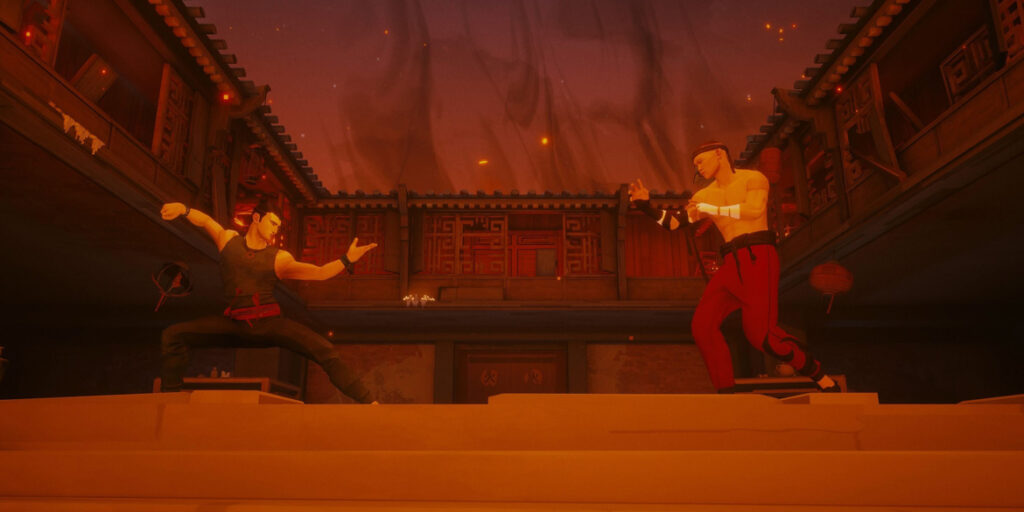
The level of polish devoted to its exquisite combat system keeps the title fresh throughout the entirety of play time. Although you are largely repeating the same levels and encounters, the combat is crafted so well that you won’t even tire from the repetitive content. The downside to a non-procedurally generated rogue-lite, is its ability to become stale after repeating the same encounters countless times. ‘Sifu’s’ combat ensures this thought doesn’t creep into your head, because the twentieth run on a level is as intense and fun as the first. Without its addicting, responsive, and jaw-dropping combat, the title would not have the legs to ensure players continue that loop. The studio demands you learn the many systems at play within combat in order to complete it’s many challenges.
Like any fighting game before it, combos are plentiful within ‘Sifu’. Beyond the basic heavy and light combos are various permanent skills that add another weapon to your arsenal, as well as a slew of focus based attacks that can be executed with a fill meter throughout battle. Time slows and brings up a wheel to select which technique you want to perform, all of which can be unlocked via the skills menu using experience points. But trying to brute force your way through the title will be met with stiff resistance, which is where the defensive moves come into play. Avoids are your most powerful tool, using the left stick to duck under high attacks or avoid low incoming sweeps. The less useful parry system can be helpful in certain situations, however, the avoid mechanic is your true defensive weapon.
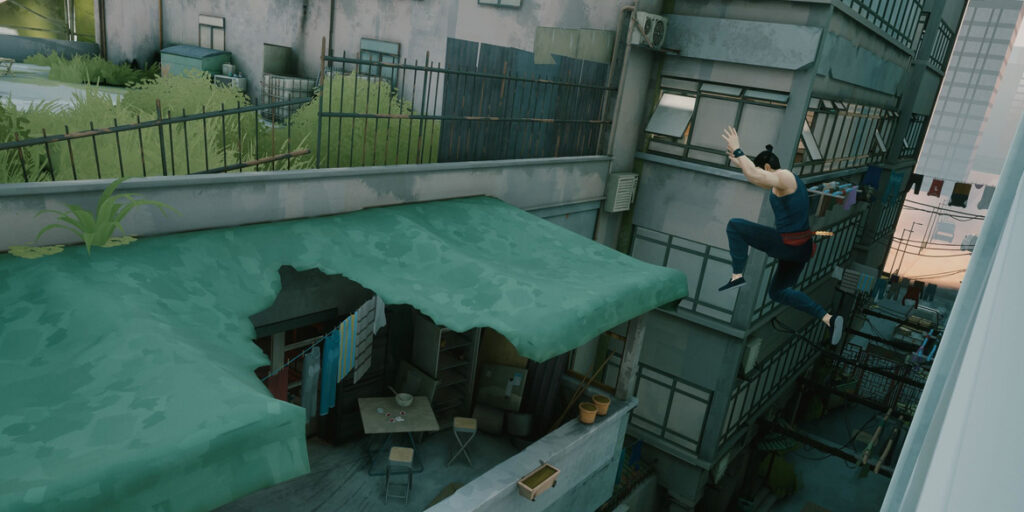
On top of all of these tightly wound systems is a structure meter, similar to ‘Sekiro’s’, structure is a building bar for both the player and enemies. When an enemies structure is broken, an instant take down can be performed. When the players structure is broken you will be left vulnerable to incoming attacks, without a way to fight back or defend yourself. While the instant takedowns on enemies are good for thinning the sometimes large herd, it comes with its risks. When performing the takedowns, you run the risk of an enemy becoming enraged, refilling their health bar and becoming far more aggressive. Killing enemies also refills a small portion of your health meter, a level which can be increased at the various shrines throughout the games five different locations.
Multiple shrines can be found throughout the levels which allow you to take one upgrade from three different categories. One being limited to your age, one for the score you build up throughout the level, and one using the same experience points at the other upgrades. These shrines save with the same checkpoint system mentioned earlier, leaving a potential issue with deciding on different upgrade paths. If you arrived at the next level at an age older than the starting age of twenty, you will be able to replay the previous level and change your shrine upgrades. As long as you make it to the next level at a younger age, you will overwrite the previous shrine skills with your newly selected ones. However, if you go to the next level at the age of twenty, you will not be able to overwrite those previously taken skills because the game works solely on the age for a checkpoint. The developer has stated they will be implementing an ability to overwrite the previous skills, but at the time of this review, that update has not arrived.

Each of the games five locations all feel unique from one another. Starting in a run down apartment complex, before moving on to a club, multi floor museum, high-rise office building, and a peaceful sanctuary high in the mountains. Once you make your way through the various rooms of each location, you’re greeted by one of the people who betrayed your father at the beginning of the game. Each boss fight is setup with two phases to get through, changing the boss behavior and location of the fight in the second phase. The boss encounters will be most players biggest hurdle to get over. Like the ‘Souls’ games that came before it, ‘Sifu’ demands you learn your enemy if you have any chance of defeating them. While the levels and boss encounters can seem very daunting at first, the proper strategy will soon reveal itself, leaving you with the knowledge to defeat the many challenges. Complete each level before your final death in your seventies and you can continue on to the next, die and you will have to restart the level from the very beginning.
Once again taking inspiration from FromSoftware’s popular titles, each of the levels have a shortcut that can be unlocked; these will allow you to bypass some of the encounters, while giving up the opportunity to hit one of the shrines. The museum level gives you the ability to skip the entire level and go straight to the boss, missing out on two of the shrines in the process. This is the risk-reward system at play in many of the games challenges, which can leave plenty of room for experimentation. This system gives you the option for a quicker, less painful ride to the next level, while inhibiting your ability to gain a potentially needed upgrade for the next area. Whether you’re deciding on using the takedown that could cause the enemy to become enraged, or spending your experience points on multiple temporary skills instead of attempting to unlock a single one permanently, these risk-reward systems are plentiful. Just another way the title remains fresh throughout your time spent with it.

On the performance side of things, ‘Sifu’ runs very smoothly on Playstation 5, rarely, if ever, dropping below its targeted 60 FPS. However, the stylized art style of the title is surely not taxing on the hardware. While the graphics are far from the cutting edge of todays games, the game is still a wonder to look at. The art style often looking like a painting instead of a video game, all while maintaining solid performance through its most congested sections. The implementation of the DuelSense can be felt throughout the run time, whether through the crashing of the in-game destructible environments, or the beat of the score in one section of the club. Developers continue to impress with the various ways they are able to utilize Sony’s newest controller.
Many do not understand the importance of sound within games or films. During fighting sequences in films, sounds are often dull and uninspired; in ‘Sifu’ the sounds are fun and energetic. This is something Sloclap instinctively seems to understand, as they did not compromise on the importance of sound in the final product. From the crashing of items inside a room, to the sound of each attack landing on its target, careful consideration was given to each of the sounds in the title and it translates to the final product. As you navigate each of the rooms throughout the levels, the frantic nature of the fight is propelled by the sounds of various crashing items in the room you’re destroying. So much of the environments are destructible, leaving each battle feeling intense and over the top.
‘Sifu’ is far from just another uninspired action beat’em up. It’s a punishing, yet rewarding title, that demands you learn its many systems in order to conquer the many challenges it lays in front of you. But if you overcome its early learning curve, you’ll be rewarded with one of the years best games. Marrying an incredible combination of addicting combat, stellar sound effects, superb level design, and challenging enemies, Sloclaps newest IP is not only where the studio should focus moving forward, but it also makes a strong push to be seated amongst the top games released in 2022.

